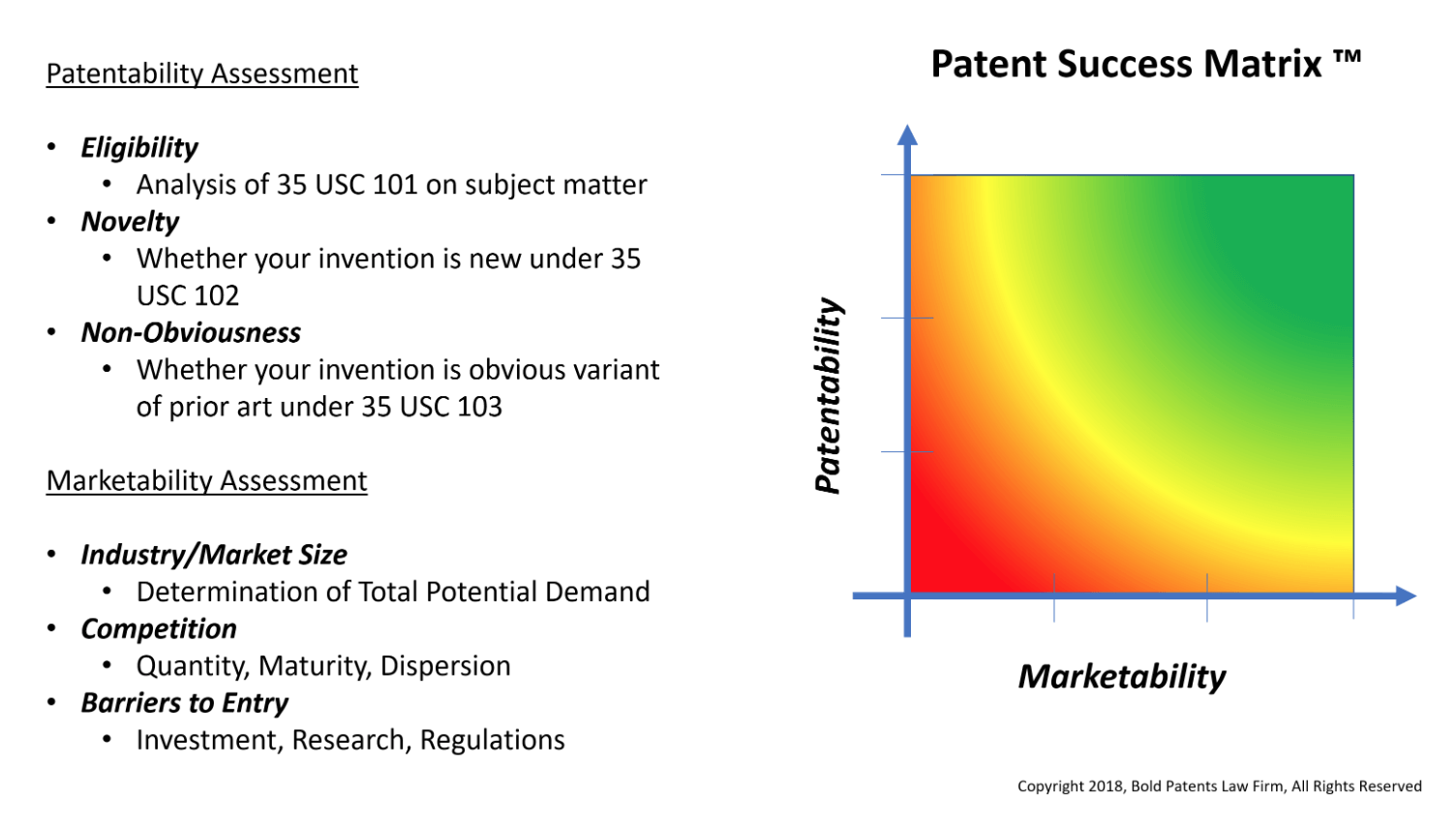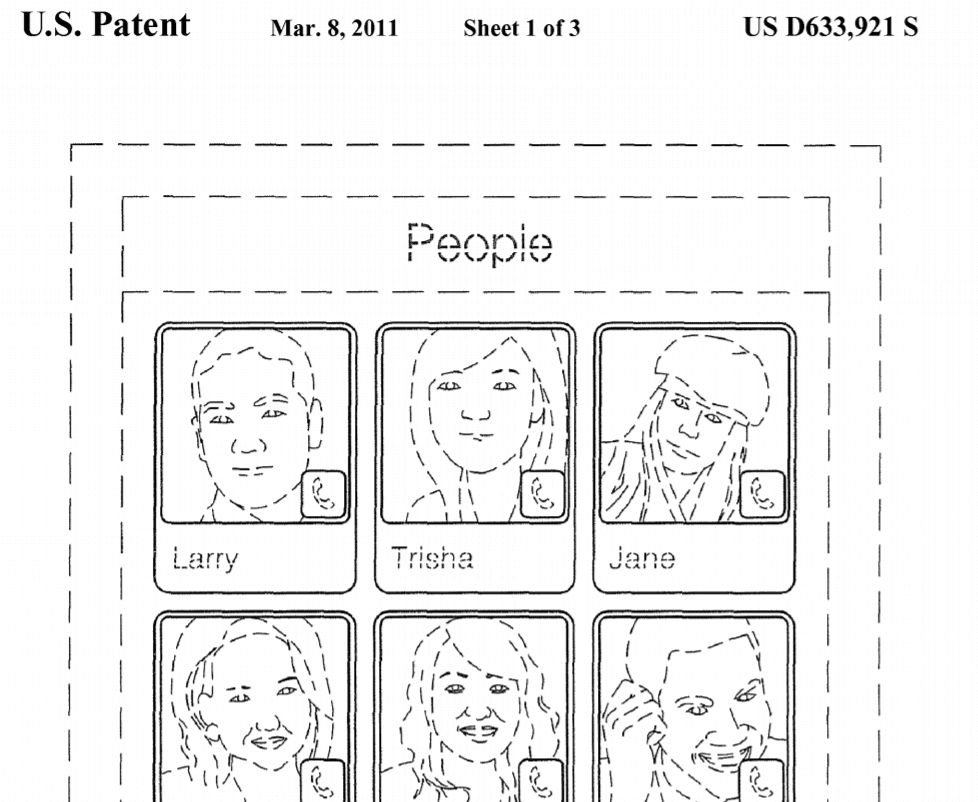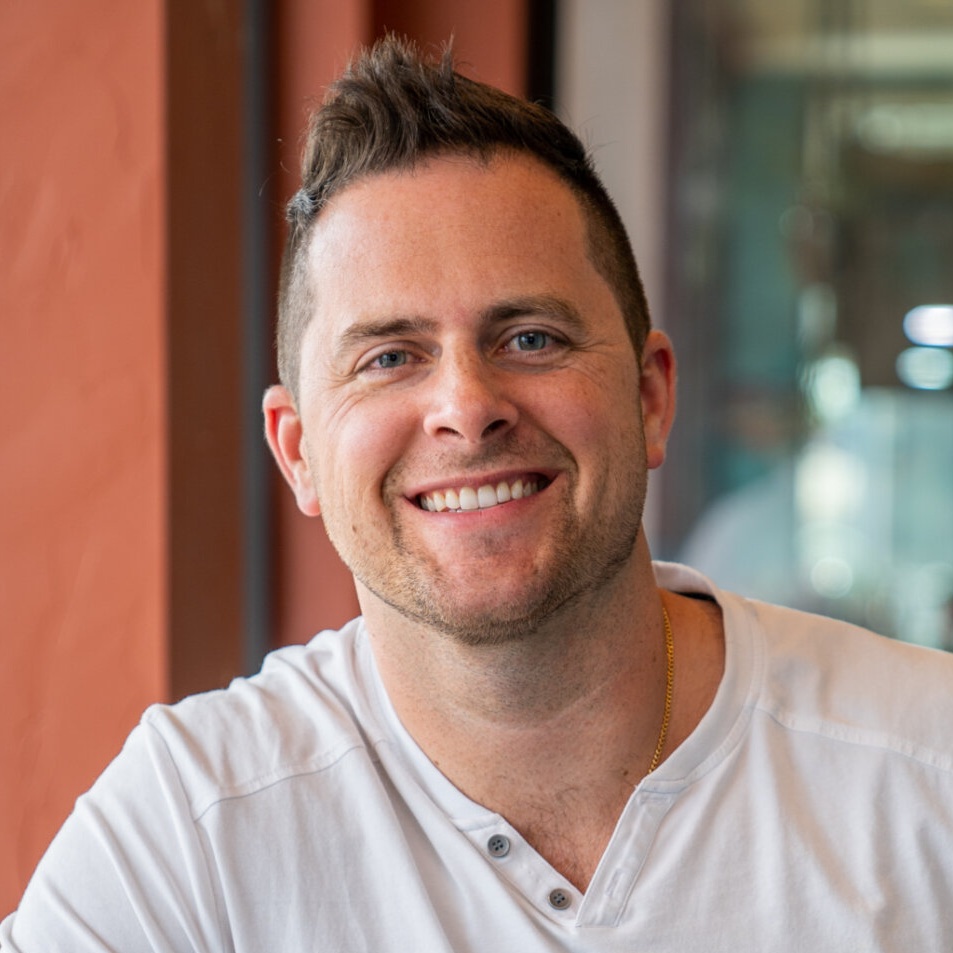Can you patent an app? Yes, you can patent an app! Exciting, right?
I always try to give you a little bit of a deeper answer than just yes or no.
So in this case, the answer really is, “Yes, but…”
Yes, you may patent an app, but know that only some aspects of what you’ve created are patent-eligible. And as we will go through these 7 steps, you’ll learn that one of the first steps is determining patent eligibility.
Patent law provides inventors with the amazing ability to ask the government to help them secure a monopoly in the market for 20 years. (Top 3 advantages of patents)
In exchange for you telling the world how to make and use your invention, you get 20 years of federal protection to prevent anyone else from making, using, or selling your invention without your permission. Pretty cool, right?
You most likely already knew a little of that before you got here, or else you probably wouldn’t have clicked the link to read this. However, it’s always nice to get a reminder.
Alright: let’s dive right into software applications, or, as we often call them today, apps.

Since the dawn of the smartphones in the early 2000s, apps have played a major role in helping to move the industry along by coming up with a seemingly endless supply of ways to be more efficient, have more fun, be more healthy, more organized, find things most easily, and so on.
These creations, while virtual and intangible, (meaning you can’t touch and feel an app… at least, not yet! At the rate technology is evolving, it may only be a matter of time) give a lot of value to their customers.
(Just think: where would you be — literally — without your favorite maps app?)
Here is a fun video going through the important aspects of patent protections for software apps:
This guide will help all of those creators that are trying to create an app and want to be the only one out there with the same functionality, appearance, and usability.
Is your app ready to be patented? Book a free consultation to get started!
Step 1: Software Inventorship & Ownership
As the creative process starts, it’s important to document everything. I know, this can seem like a drag, but if you’re doing to do something that’s going to take a lot of your effort, you might as well do it right.
It starts with the creative spark: that first conception, idea, and synapse that went off in your head. The all-important light bulb moment.
Before you jump in and start learning how to write a patent application and file it, think back to that light bulb moment. Were any co-inventors with you?
Were you working on solving a problem?
Was there was a multiple-light-bulbs-going-off scenario?
Or was a chain effect, where your idea led to a better idea because of the input or intuition of another?
These are instances where you may be an inventor, but there are likely other co-inventors as well.
Make sure to document anybody else that could possibly be a co-inventor to the patent app idea. It’s way easier to get this done correctly upfront than to have to chase it all down later in a lawsuit.
Next up is patent ownership. This is an incredibly important inquiry. Many software designers and developers who are making applications are inventing work (at least at their day job) at companies and they are often employees somewhere.
Being an employee usually means giving up some freedoms, and, commonly, (especially at the bigger tech companies like Facebook, Google, Microsoft, or Amazon) their employment agreements are quite aggressive.
Aggressive? Most definitely — they will try to claim rights to anything that you invent while you are an employee. While this is a little bit of a stretch, they likely can assert this right legally for work you do on the job and for which you’ve been compensated for. This includes working from home using company resources and while “on the clock.”
To avoid your next app idea becoming the property of your employer, make sure to do everything related to it on the side — that means using your own computer, doing work on your off hours, and making sure that the area of innovation is not directly related to your job description.
Legal note: For a more definite answer on this, please contact a local state-specific employment attorney, as these rules do vary state to state.
Do you have an idea that you believe is rightfully yours? Book a free consultation to see if we can help!
Step 2: Research Other Apps
Oftentimes, research gets overlooked. This is likely because it’s not fun, and doing it the right way can be a challenge!
It’s also hard to stop and dig into research when you’ve uncovered a major solution to something such as software apps because of how large the market is.
And for the same reason (the size of the market), research becomes even more important. With how pervasive smartphone technology is worldwide, it is important to see whether any other software solution has been created both in the US and abroad. In addition, many solutions have been created and documented, but not yet marketed.
This means that there are patent holders that are holding their rights and for whatever reason haven’t commercialized them yet, nor made them public.
In the past 10 or so years, these non-practicing entities have been given the name patent trolls.

This label is apt for those that knowingly wait for innocent entrepreneurs to enter the market with their new idea without doing research first. Once they start making money, these trolls then send a cease and desist letter threatening a lawsuit if they don’t start giving them a royalty based on their IP and patent rights.
Here is an example from a cease and desist letter sent by one of those nasty trolls:

Ouch! You don’t want to be that guy when you create your new software app, so make sure that you at least do the research required to see if you’ll be infringing anyone else’s patents before getting serious and taking any inventor’s money.
Here you will find a great resource if you’re in this situation and you want to think through some options on how best to move forward (if you’re the troll).
This question of “Can I get a patent on my app?” is different from “Will I be sued for infringement?”. The first one, which is the subject of this article, is the place to start for patent eligibility. The latter question is important and comes after patentability but before the monetization or commercialization of your app.
Step 3: Find Your Software Patent Attorney and Law Firm
This process should not be automatic. You should not just go with the first patent attorney that you meet or that you’re introduced to — and certainly not the first patent attorney you find on Google or Bing!
The person you should be looking for is not simply a software patent attorney; it’s best that you look out for a great all-around patent attorney, because you are largely going to need help with the legal process, not so much with the software and tech side of things (as that is hopefully the area that you excel in).
I care so much about this process that I wrote a blog article dedicated to helping you find the perfect software patent attorney – “10 Things to Look for in a Software Patent Atttorney.”
Step 4: Software App Invention Disclosure
A hallmark first step of the patent process is fully disclosing and documenting your invention.
It’s interesting that most app inventors I meet with have a prototype for their idea. This is because the cost to develop is usually only time, and it can be done without too much financial expense.
This is not true for inventors of other technologies — for example, think about an aerospace inventor having to fabricate a device for an entire airplane!
What’s also interesting is that app developers don’t realize that even though they have a working prototype, they are sure that “This is it!” — meaning, they believe the working version is all they need to think about in terms of locking down with patent protection.
I tend to ask: “So, let me figure out the details of this app…” or: “Show me how this app works.”
They usually start citing code or structure, or network, or something along those lines. Oftentimes I have to slow them down and help them understand that we’re not protecting code with the patent.
Instead, what’s protectable with utility patents, is the functionality of their app. The functionality of a software app is best shown and claimed as a flowchart.
In order to get to a high-level flowchart showing the functional steps of the app, we need to explore other ways the app could function. This is the part of the invention disclosure process I call the invention expansion process.
It starts with “Tell me how else this app could work….” and we begin to discover that the current prototype that the software developer and inventor brought in has applications in many many other industries.
During this process, we figure out a core functional flow of data, information, and processes. The flowchart is a beautiful way to break down inputs and outputs in a very linear format that is also the way we format figures for patent filings. Here is a good example:


Step 5: Professional Software Patent Search & Legal Opinion
Once you complete your own research, found your patent attorney, and documented the invention disclosure process, you are ready for step 5.
A primary concern for many inventors of software patents is eligibility. I talk about this in great detail in this YouTube video and I highly recommended viewing it before reading about patentability in general:
By doing research up front, you should have a list of other apps and software that have a similar functionality to yours.
You’ll want to make sure to get this information into the hands of your patent attorney, as it will be helpful for them to do a classification-based search and will be much better than starting from square one.
By doing such a great job on the invention disclosure process, you will have a broad all-encompassing keyword list that the patent attorney will draw from when they begin their professional worldwide patent search process.
This section is so important that I actually wrote a separate blog article all about how to perform a patent search. I highly encourage you to visit this article – “How to do a patent search in 6 steps.”
All of the concepts from that blog apply to software apps and the research and process is the same throughout.
Even if there is an app that will likely lead to a novelty rejection, you should not be in dismay. You should instead look to protect some other aspects of your app under design patent law.
Blog Article: How to file a design patent application in 10 steps.
User interfaces, the configuration of workspaces, visual effects, and even the app’s icon are protectable under design patent law as ornamental novelties.
An example is D633,921 for a “Graphic User Interface For a Display Screen” owned by HTC. You can see it is a design patent by the D in the patent number. You can also see in red circle below that the claim, while broad and simple, does specifically call out the “graphic user interface.”

Here is an example figure from the ‘921 Design patent below:

A professional patent search and legal opinion from a patent attorney is all you need to make a sound business decision going forward.
You will be able to gain perspective on the the prospective rights you may be able to receive if your patent were to issue. If the field is too crowded and there are several patents or publications that are too close to your invention, the patent attorney should let you know that based on your current disclosure, you should not file the patent application for your app.
Don’t get distraught if this is the answer. You’ve likely just saved tens of thousands of dollars on filing a patent application on your software app that would have just been rejected by an examiner. Money well spent!
What’s more? You now have much more information as to who your competitors are and who owns rights over certain aspects of the app you have already developed. This will give you insight as to whether you may be infringing on their rights.
Do you have more questions? Book a free consultation today!
Step 6: Filing a Provisional or Nonprovisional for Your New App
Whether to file a provisional or nonprovisional patent application will be based on your app’s solution space and market size.
It will also depend on other factors related to your business plan.
Below is a graphical representation showing the differences and timing considerations from the patent search to the provisional and nonprovisional patent application:

If speed to market is going to be important, then you likely want to file a nonprovisional patent application. This is because the nonprovisional is the official and formal submittal that the USPTO examiner will then review and assess whether to allow it to grant or not.
Here is a video explaining the key differences between provisional and nonprovisional patent applications:
A provisional will not be reviewed by a USPTO patent examiner and serves only to lock in an early priority date so that any later filing inventor will lose to you and you will own the patent rights.
The America Invents Act of 2013 changed this system from a first-to-invent to a first-to-file system, making the filing date all-important.
If your invention needs more user testing, and you think your invention will need to show some improvements, file a provisional! Check out this video here about provisionals:
But, if you’re trying to get your invention rights granted as soon as possible, file a nonprovisional. Check out this video all about nonprovisionals:
And now the hard part: writing the patent application.
The majority of the work for the inventor and patent attorney lies in the development of the written description, claims, and drawings. These three aspects of the patent application will be derived from the patent search: meaning, the focus of the writings and claimed technology will be those areas identified in the search s novelty areas.
There will be less focus on the areas that are already part of the public domain and already part of patented technology, and more on the areas that are unique and are owned by you, the app inventor.
Interestingly enough, the fundamentals of a software application specification are no different from a mechanical, chemical, consumer product, or electrical invention. I have articulated a full blog which focuses just on how to draft a patent application in How to File a Patent Application.
Are you ready to file your parent application? Book a free consultation today!
Step 7: File the Software App Patent Application with the USPTO
This is going to involve a lot of little administrative steps and paperwork, and while a bit tedious, it’s a straightforward process.
Here is a list of all of the documents you will need to complete with your patent attorney prior to submitting the patent application:
- Oath/Declaration
- Information Disclosure Statement
- Cover Sheet
- Specification
- Claims
- Drawings
- (optional) Application to Make Special
- (optional) Patent Cooperation Treaty (for International Filings)
- Fee Sheet
- Entity Status Form
- Application Data Sheet (ADS)
I have a great reference on how to electronically file the patent application, so I won’t repeat that part here — check it out on the USPTO.Gov website.
In Conclusion…
Can you patent an app? It depends on a variety of factors as discussed in this article.
However, if your app is eligible it might be one of the best decisions you can make for your business since it will protect your intellectual property for a period of 20 years!
Make sure to review the following 7 steps.
- Software Inventorship & Ownership
- Research Other Apps
- Find a Software Patent Attorney and Law Firm
- Software App Invention Disclosure
- Professional Software Patent Search & Legal Opinion
- Filing a Provisional or Nonprovisional for Your New App
- File the Software App Patent Application with the USPTO
If you got all this figured out, but now you’re asking how much to patent an app? Be sure to check out our full guide to patent costs.
Good luck with your new app invention and thanks for visiting our blog page!
Tell us… What did you find most helpful about this article? Did you realize how similar the patent process for apps is compared to other patented products? What is something new that you learned from this post?
Is it time to Go Big and Go Bold℠ with your idea? Click here to book your free consultation with us to get started!
—
Legal Note: This blog article does not constitute as legal advice. Although the article was written by a licensed USPTO patent attorney there are many factors and complexities that come into patenting an idea. We recommend you consult a lawyer if you want legal advice for your particular situation. No attorney-client or confidential relationship exists by simply reading and applying the steps stated in this blog article.

